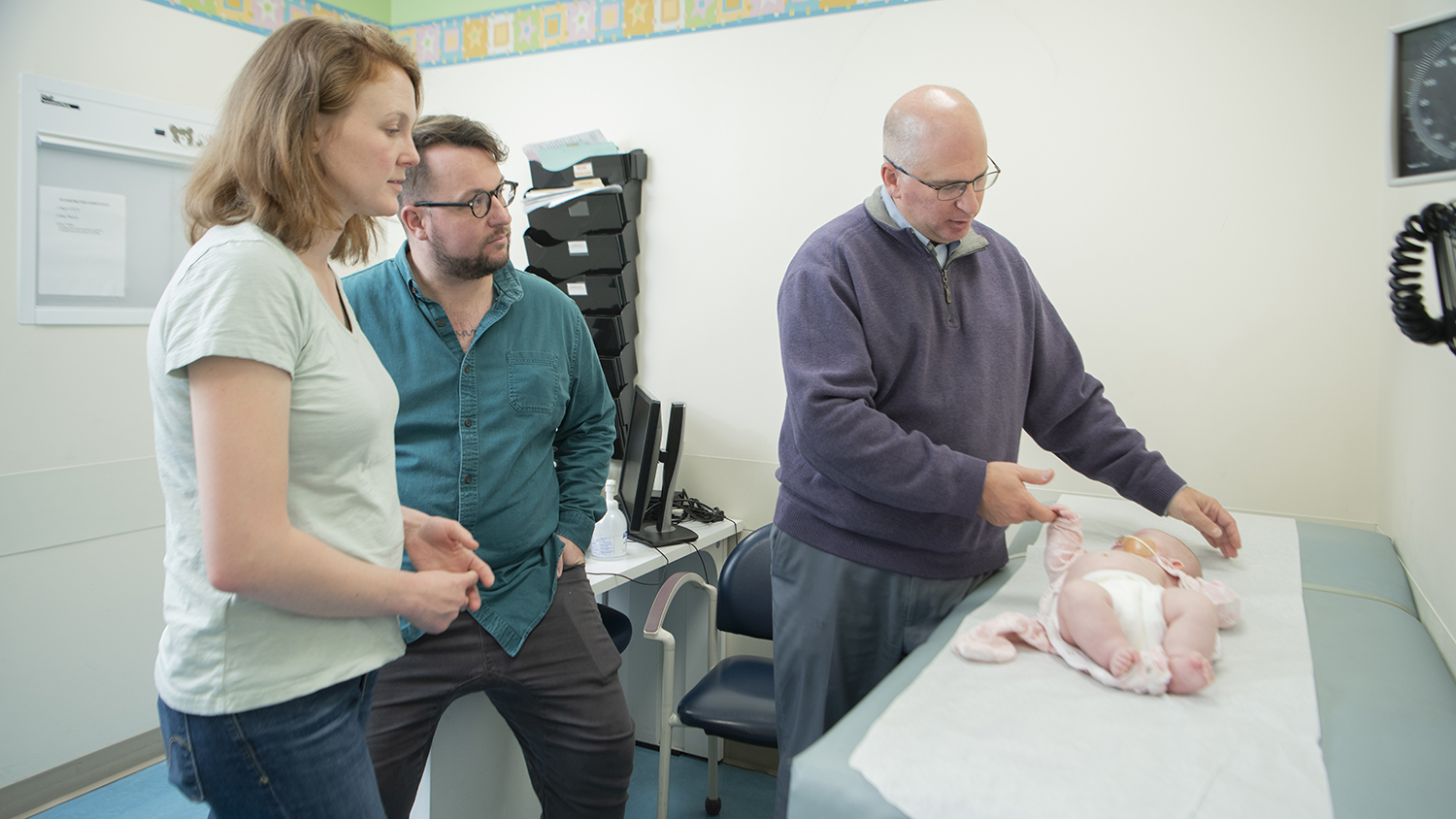Condition
Pediatric Chronic Constipation
Malone Appendicostomy

Colon Resection
Malone Appendicostomy (MACE) Recovery
If your child has had a MACE procedure, a catheter will remain in place for one month. To keep the opening from closing once the catheter is removed, a type of plug called an ACE stopper will be put in its place for six months. The plug will be removed once daily to irrigate and flush the colon with a special solution.
View our videos featuring MACE recovery tips.
How to Care for Your Child’s Malone Appendicostomy
Your child’s medical team will give you detailed instructions on how to care for your child’s Malone surgery site once you are home. Keep in mind that drainage is normal and may resemble a clear to light yellow color. You will need to administer enema fluid daily through the catheter to keep the colon flushed and clean. For the first month, you should keep the Malone tube secured to your child’s abdomen (with clear tape dressing) without completely covering the opening. It is safe to shower and bathe after surgery. Make sure to clean around the tube insertion with soap and water and then pat dry.
You should call your child’s provider if you notice the following:
- Abdominal swelling or pain during or after flushing the colon
- Fever
- If the area or stitches holding the catheter in place become red and irritated
- The tube falls out prior to your child’s follow-up visit
Colon Resection Recovery and Surgery Site Care
After a colon resection, your child will be encouraged to get out of bed and walk as soon as possible. Doing so helps speed up recovery time. Your child may also receive medication for pain management.
Once you return home, make sure to follow your doctor's instructions regarding bathing and dressing changes. Keep an eye on the incision site for signs of infection, such as redness, swelling or drainage. It's normal to see some blood in the stool or diaper following surgery, but contact your doctor if you notice any excessive bleeding.
It will take some time for your child’s bowel movements to return to normal after surgery, and it's important to follow a healthy diet with enough fluids and fiber. Your doctor can provide specific guidance on your child's dietary needs during recovery.

Comprehensive Motility Program
The Motility Program works to help treat a number of motility issues impacting your child’s digestive tract, including abdominal pain, aspirating, constipation and incontinence. Learn more about our Comprehensive Motility Program.

Pediatric Colorectal & Pelvic Reconstruction
The Division of Pediatric Colorectal & Pelvic Reconstruction offers the latest advancements in diagnosis and treatment for all types of pediatric colorectal disorders.





